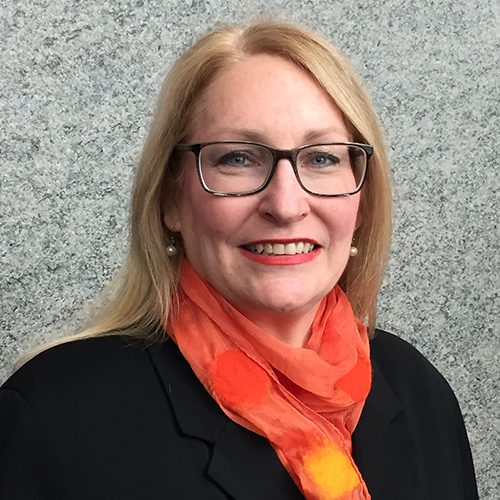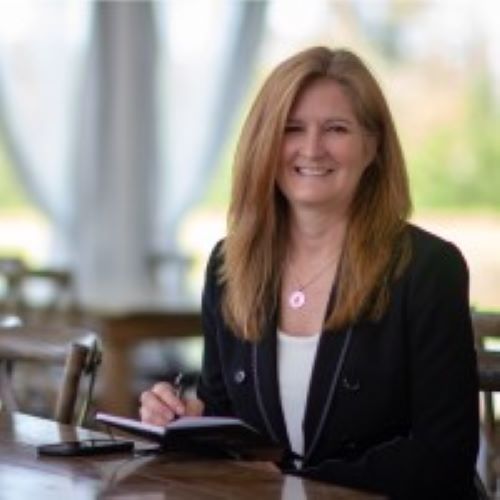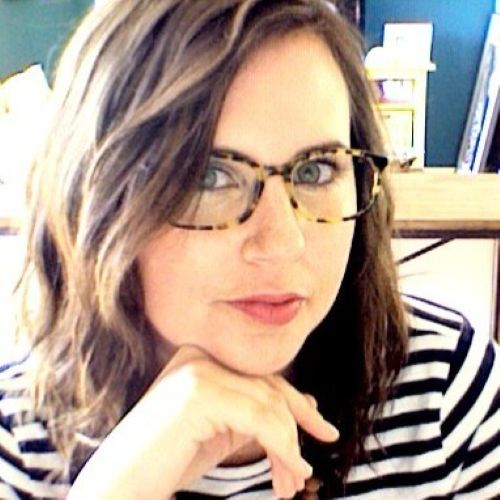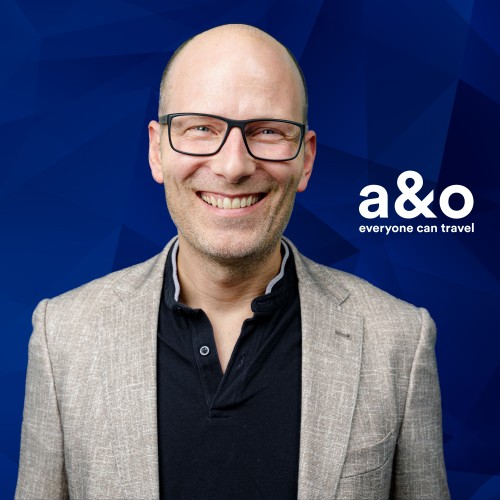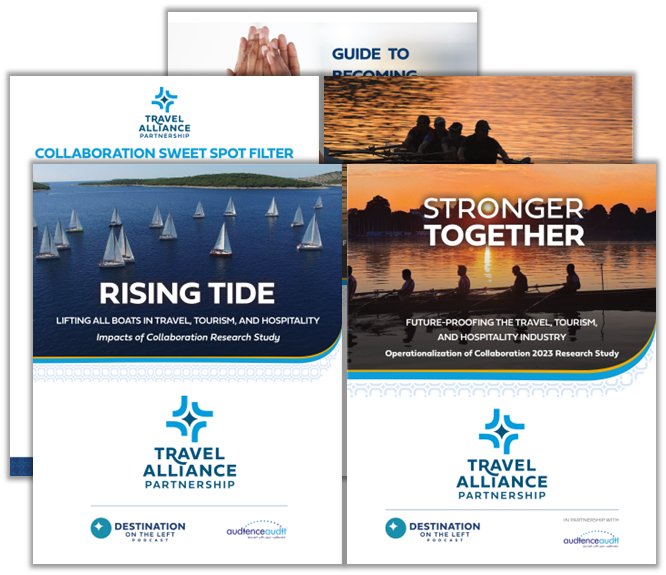Hillarie Logan-Dechene
Episode 52: How Attractions Can Shape A Destination, with Hillarie Logan-Dechene
In this episode, you will learn about making the most of your resources and entering into collaborations to create a lasting impression on visitors from Hillarie Logan-Dechene.
Hillarie Logan-Dechene’s career has been about building the capacity of not-for-profit organizations. As the Wild Center’s Director of Philanthropy, she is responsible for all membership and development activities and works closely with leadership on strategy, governance, and external affairs. She recently led the center through a successful 23 million dollar fundraising campaign.
Hillarie is Chair of Governor Cuomo’s New York State Commission on National and Community Service, which administers the Americorp Program in New York State. She is a board member for the Museum Association of New York.
She is a past board member of the Adirondack Health Foundation. Hillarie is an adjunct professor at Skidmore College, guest lecturer at Syracuse University, SUNY Adirondack, and NYU. She has an MA in nonprofit leadership and community sustainability from Skidmore College and a BA from SUNY Albany. Prior to the Wild Center, she was VP for Institutional Advancement at Paul Smith’s College. Before that, she was Director of Institutional Advancement for the Adirondack Museum where she worked for more than 16 years.
Hillarie lives in Long Lake with her Husband and daughters.
More on Hillarie’s Background
Thank you for joining me, Hillarie.
Oh, it’s my pleasure. Thank you for having me.
I’m looking forward to our conversation. There is so much happening at the Wild Center, but also in the Adirondack vacation region in New York State, so I can’t wait to explore that with you. Before we get started, can you give us a little bit more on your background and your journey? I find that in your own words it gives us and our listeners so much more context.
Sure I’m happy to. I came to my career in kind of a backwards way. I came to it really because of my love for the region. I knew I wanted to live in the Adirondacks, and as a recent college graduate, I just wanted to live in Long Lake, which is in the heart of the Adirondacks.
Knowing that, I took my communications degree and my passion for art history and said I’d love to live in the middle of this beautiful region, and I wanted to see if I could land some kind of job relevant to the field that I just graduated college with.
I was fortunate to get a summer job at the Adirondack Lake Center for the Arts and then subsequently get a job at the Adirondack Museum when they were first starting their first ever development office. I didn’t even know what development was to tell you the truth. I didn’t know people actually got paid to raise money. You know we all did high school fundraisers, March of Dimes, things when we were kids and you know, that kind of thing.
When I was asked to apply for this job as a development assistant, I honestly didn’t know that you could make a career out of raising money. Almost 30 years later, I’m still doing it, so that’s sort of the evolution of that.
That’s really awesome. Yeah, that’s so cool that you have this degree and this background. You have a love of a place, and you were able to find your way and make a living and a career out of doing what you love and also living where you love. I think that’s really cool.
I was lucky that as starting at sort of the ground level at a museum, I was able to learn, also, all of the stages of how to do this. Working at small organizations, you get sort of cross-trained. I was able to do a lot of marketing work, which I also did before I started at the museum, and really hone my skills and learn from the ground up.
That was excellent on-the-job training, and as anyone knows who’s listening, when you have that kind of experience, it’s priceless, and you can really appreciate what others do to help support you as you move along through and to other jobs.
Yeah, I agree with that so much because there really is something to be said about, especially starting out early in your career and having that small organization experience because it is a much different experience than when you work say at a larger organization or a big company where you might be more siloed in the activities and the experiences that you have. I think that’s really a cool way to explain that and to have that experience, what you called cross-training. I think that’s awesome.
Why You Can’t Sit Around and Wait For Other Organizations to do Things for You
Hillarie, on this podcast we talk about two things. We like to focus on creativity and collaboration. And I’m really looking forward to hearing some of your thoughts in both of these areas. We’ll start a little bit on creativity, and I do find as we have these conversations, sometimes it’s hard to talk about creativity without talking about collaboration because so much of the work that we do involves working with others all the time.
To start, the tourism and hospitality industry is very competitive. You’re in the Adirondacks. The Adirondacks is a large vacation region, but there’s also so much else to do in New York State and places around there. What have you done to stand out from the crowd?
Well, to stand out from the crowd, in my current capacity at The Wild Center, one of the things to stand out from the crowd we’ve done is to work collaboratively with others. I say that with true sincerity. Starting, as I said, almost 30 years ago working in museums and art centers, which is a very strong part of the tourism segment in the Adirondacks, a strong sort of anchor for tourism in the Adirondacks.
There was a long time ago, an instinct to be very siloed and to just market your attraction. We didn’t even call it attractions back then because really everybody was very focused on what their discipline was. A museum was a museum. An art center was an art center, and you just sort of focused on yourself and tried to market just what you did.
That didn’t really work very well because people don’t travel like that. Even people who live in the region don’t recreate like that. They do more than one thing, so you kind of defeated your purpose. We’ve learned over time and certainly, the Wild Center has always behaved this way because they have the advantage of being a young organization, just turned 10 years old a couple of years ago, so that’s the benefit of that.
We’ve learned that your participants, your visitors, your customers, they are gonna do more than one thing either in a visit or in an experience. They’re gonna go from your organization, your business, to another one during their time in the Adirondacks, and they’re gonna love more than one thing. And that’s a good thing because you want them to come back. You want to them to go away from the whole region with a positive experience.
They’re gonna ask you for recommendations, and you want to do as much as you can to get them to love the whole experience. For people who can remember Miracle on 34th Street, and it’s a great time of year to talk about that, but it’s the Macy’s/Gimble thing. It’s recommending your peers, recommending the place down the street and helping them to find the next fun thing to do, the next innovative thing to do.
In that way, you’re endearing them to you, to your experience and creating lasting relationships. I’m not really talking that much about what we do in particular, what our mission is because it’s all about creating relationships.
What we’ve learned is if you can create a lasting impression, both with your missions work because we’re a museum, but also with the experience that the customer has in terms of customer service, you have a better likelihood of creating a repeat visitor, or just somebody who will go out and say great things about your business or your museum or your attraction to someone else and recommend you, which, we all know, is the kind of Holy Grail in tourism, those positive recommendations. Whether they’re given verbally or whether they’re given through social media, those positive recommendations are what we all need to generate new business.
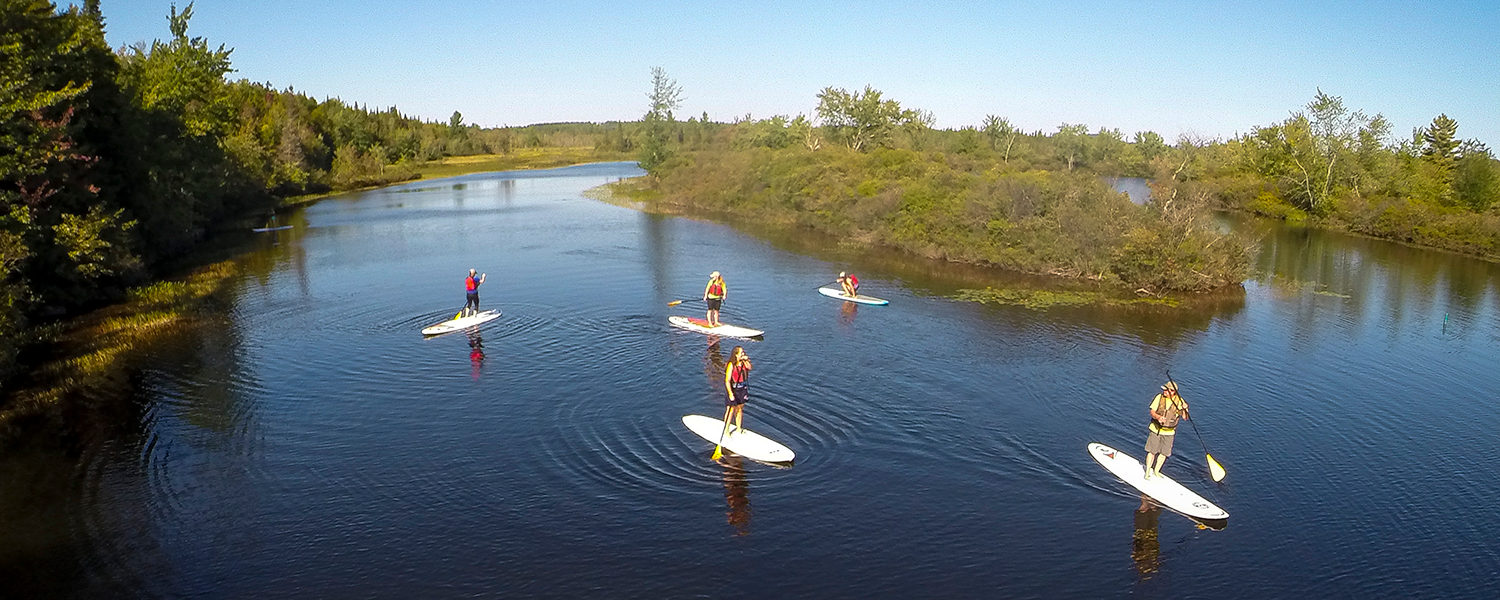
[bctt tweet=”“If you can create a lasting impression, you have a better likelihood of creating a repeat visitor.” – Hillarie Logan-Dechene #WhyCollaborate #podcast”]
Yeah, I agree, and it’s so much easier, isn’t it? To get someone to come back than to get them there the first time.
Yeah, so much easier, and so much cheaper. I mean you’re talking about if you can collaborate, and if you can do this consciously. I mean it’s nice to do it unconsciously and because you’re a good neighbor, but if you can actually start to do this in a collaborative way with your partners, and we can talk more about what that means, but if you can consciously identify routes that people would take and places they would go in an orderly fashion after they visit you or good places for them to stay and help them out. Help out people either pre-visit, post-visit, during their visit. Make their experience easier. Help accommodate them in any way, shape, or form.
That’s way above and beyond anything that we were thinking about in terms of what a museum was supposed to do 25 years ago. We didn’t consider ourselves a tourist bureau. We now consider that a little bit part of our job.
Yeah, that’s really interesting. I know you do have a very active role in the region, even in the leadership role in some of the programs you’ve been involved in. Can you share with our listeners a little bit about some of these collaborations, and how you’ve kind of taken it to that conscious level? You said, you know, when you’re consciously and actively working in that collaborative way.
You can’t sit around and wait for other people, other organizations to do everything for you. I don’t mean that people are not doing their jobs, or that everybody else, that there’s some sort of deficiency. I’m just saying that in a place like the Adirondacks, we don’t have millions and millions of dollars through a visitor’s bureau or a convention bureau like you might have in New York City. We have scarce resources, and we all have to kind of work harder to do what we do.
If there is some lack of something, and we identify it, we’ve gotta figure out a way of filling that need. We’ve identified, for example, a need to attract international visitors to the region. We don’t have enough international visitors coming to the Adirondacks, and we think that we have what international visitors from certain markets would really like.
We’ve identified, with the help of New York State, through I Love New York, we’ve identified the Chinese market and then part of the European market as really good potential target audiences based on the demographics that they have. Knowing that they fit a profile and that they would be attracted to what we have to offer and also what some of our neighboring regions have to offer, we have decided that we need to take it upon ourselves, because we don’t have, as I mentioned a massive Chamber of Commerce funded by huge taxes or anything like that. We just have small chambers working around, and they’re all working at capacity.
We said, alright, so we need to create an effort to attract this market. We applied for some grant money, and we decided to dedicate some of our own monies to creating something called Go North, which is an effort to attract some of this international travel trade. We’re talking about the wholesale trade market.
We’ve decided to work together with people from the northern part of the capital region and attract them from Saratoga up through Queensbury and up through the Lake George region through the Adirondacks and create an itinerary for the international travel trade, the wholesale market, to market to these audiences.
Rather than wait and kind of basically complain that it wasn’t happening, we just decided to make it happen because when we went to travel shows, or we spoke to people in that international travel market, they said that the Adirondack region was basically a black hole. We could either sit there and say, “Darn it. It’s a black hole. We’re not gonna get this market,” or do something. And doing something was a lot easier than just complaining about it.
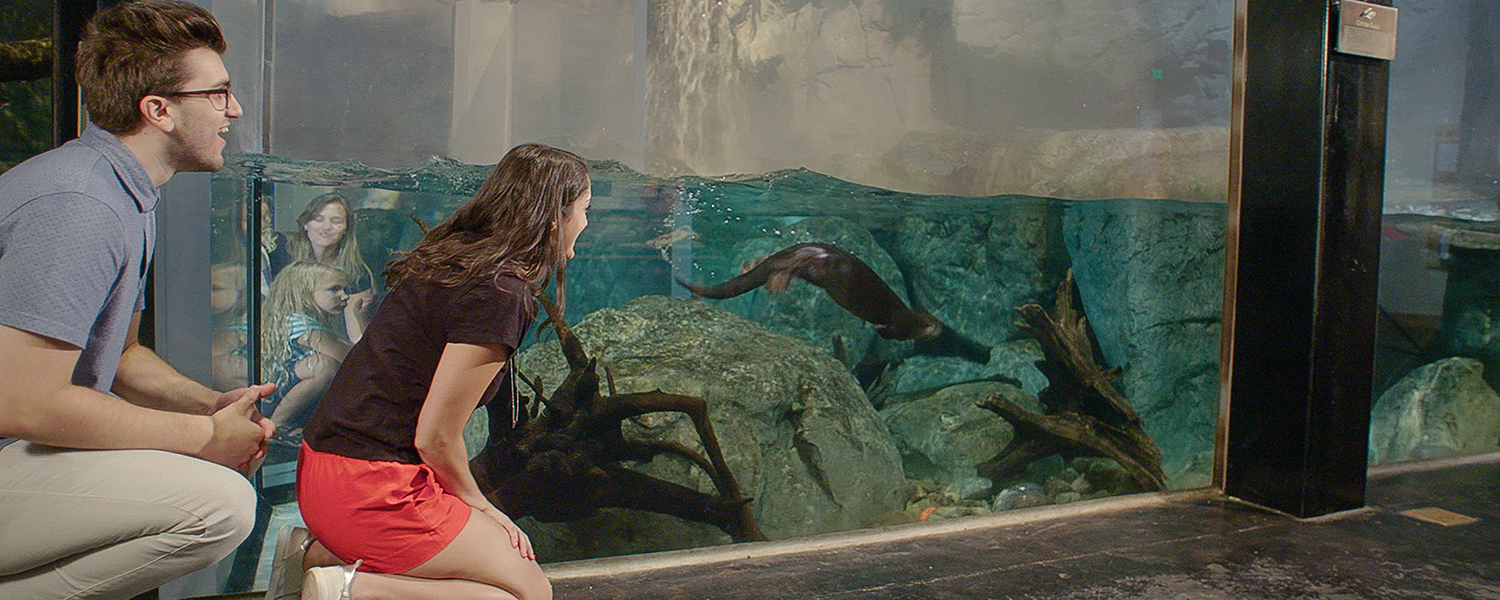
[bctt tweet=”“You can’t sit around and wait for other people, other organizations to do everything for you. Doing something was a lot easier than just complaining about it.” – Hillarie Logan-Dechene #WhyCollaborate #podcast”]
We’ve got a lot of good, positive feedback from the region. We’ve got positive feedback from people in the international travel trade, and we’re just trying to put it together. Now is it normal for a museum to spearhead this? Maybe not in the past, but I think it’s perfectly fine because it just needed to happen, and it’s going to benefit many, many organizations.
It certainly will benefit us as well if we can kind of crack that nut and start the floodgates of this new revenue stream that would come at different times from our traditional audiences. It’s going to help everybody, and that’s the kind of sea change in thinking that we’ve gone through over the last 20 years or so. This is not a little trite statement, but if we can work together, we’ll all succeed.
We need all of our businesses. Our travelers need to eat. They need to sleep. They need to be entertained, and we need multiple types of businesses to do that, and they need to be entertained over many days. They’re not gonna keep coming back to the same attraction, so we need many attractions. We need to work together to do that.
That’s a really great example, and I just love that Go North product because it’s not just the Adirondack region. It goes beyond that. Right? It goes into Lake George, and then into the capital region. So it’s this really broad kind of collaborative effort that you and your partners have pulled together.
What I really like about what you just described to us, is you talked about speaking with international travel trade and hearing the response that the Adirondacks is like a black hole, which is a pretty large black hole in New York State because it’s such a huge region, and instead of just throwing your arms up and saying, “For crying out loud.” Instead, you said, “Let’s fix this, and let’s make it happen.” I think that’s just really great advice, and I’m also hearing that it’s not an overnight project. Right? It’s more long-term.
Right absolutely. It is definitely long-term, and we know that we’re in this for the long game. If we see a couple FITs, a couple of buses of groups, if we start, and I have to tell you, those words are rolling off my tongue now, but maybe a year or two ago, we didn’t know what those words meant in the Adirondacks because we really didn’t have any TMOs. We didn’t have anybody doing this kind of work in our region.
When you don’t know what you don’t know, it’s hard to develop a market. So we’ve done a lot of work with the region just learning the vocabulary of this market, and we’ve brought in experts to talk to our providers, our hospitality segment, our tourism partners, and just kind of bring us all up to speed, myself included.
I’ve got a partner on my staff, Patrick Murphy, who’s really been working with our partners who are just learning as much as we can about this market. We know that it’s going to take years to develop this, but we know that in other regions, this has been done successfully, and over time it really can transform the picture of your tourism segment and bring good consistent revenue in. Like I said earlier, at different times than your traditional American audiences.
Yeah, and I think that what you’re describing first of all, what you just talked about with this whole educational piece. You know, you don’t know what you don’t know. Spending that time, not just to educate yourself, but also all of your partners, and really investing that time and resources in getting everyone up to speed.
But then also to have this long-term vision. I had a conversation on an earlier podcast episode with Rick Antonson, and we talked about cathedral thinking, which is this whole concept of just thinking about things and having an impact and what you’re doing today about understanding you’re not really gonna see that full impact for years to come, maybe even after you have moved on from your position.
Yeah. Right.
Having that long view, I think is so important and really exciting to think about what could be in the future based on this foundation that you’re building right now.
It’s interesting that you say it like that, and that’s such a great way to characterize it because really my job in philanthropy and what I do in terms of building relationships, it’s very often that I know that a lot of these relationships will yield dividends for the organization over time. And hopefully, a lot of those big payoffs will come well after I’m gone. That makes me happy, not sad.
Yeah.
In plan giving, I don’t want to see my donors pass away or anything like that, but we know that that legacy will be there someday. In this way, we’re building these relationships. We’re building things that will sustain our organizations and our regions over time.
This is not gonna be a flash in the pan, and that’s good because we’re talking about building sustainable communities. We’re building sustainable tourism. We’re trying to think of ways of building new streams of revenue that we can maintain being nimble as organizations, but still being smart financially and strategically so that we’re not reliant on one particular segment so that our profile is more diversified.
It’s a smart strategy if people can be patient and if they can think about different ways of looking at things, but it requires, like you said, education and buy-in from a lot of different segments. We are seeing the trickling, the beginnings of people from these different markets coming. That’s very encouraging.
Oh, absolutely. When you can start to see just the initial start of it, that definitely can help keep the momentum going. I can see that for sure. That’s really great.
The Wild Walk
I want to change topics slightly. I love this Go North, and we could probably talk this entire interview just on that project. It’s so interesting. I also wanted to change subjects just slightly. One of my questions always relates to this whole idea of how creativity can appear in the face of adversity or a challenge, and boy, this Go North project that you are working on certainly is a great example of that.
As you started the conversation talking about the small chambers, everybody’s working at capacity, scarce resources and how you kind of built this program to spite that. But I also wanted to talk a little bit about the Wild Walk because I know that that was a creative solution to a challenge that the Wild Center had, and I’d like our listeners to hear that story.
Do you mind sharing with us how that came about? Then as you’re telling us about it, describe what the Wild Walk is for those who haven’t been lucky enough to have done it like I have.
Certainly, certainly. Sure. Wild Walk, it’s kind of hard to describe, so I encourage listeners to Google it when they get a chance. But Wild Walk is an elevated walkway into the trees, if you can imagine a boardwalk that goes up into the Adirondack forest.
It’s designed to change people’s perspective on nature, to take them up, and while they’re walking up into the trees, give them a number of different elements to look at. It has a rustic tree house feature. It has hanging, swinging bridges. It has a big old oversized dead tree snag. Think of a big old broke-off white pine.
It has an oversized spider’s web 25 feet above the ground. Then it has a giant eagle’s nest that you can climb up into and look out over the Adirondack high peaks, and you can just see the Racket River winding down below it.
You get these great views of the Adirondacks. From up there you can barely see any buildings. Maybe a little smidgen of a building. In the winter, you can see a little bit more, but you really the perspective of that kind of unbroken wilderness feeling when you’re up there.
The Wild Walk was the expansion of an idea when the Wild Center was first built. There was an idea to have a fire tower, but the fire tower concept, first of all, there wasn’t enough money to build it when the Wild Center was first constructed 12 years ago. Then, there was the complication of it wouldn’t be accessible. It would not be universally accessible.
Then the idea said, okay, well we need to make it universally accessible. We have to have a certain grade, and it would have to be X number long. Then it was gonna be six towers, and the towers needed to be interesting. Luckily we have a brilliant designer, Chip Ray, who was involved with the original design of the Wild Center, and he got involved in the project and designed this beautiful six-tower array.
But we tested it, and those six towers without those other elements that I already told you about, wasn’t that exciting. We did end up adding the rustic tree house and the spider’s web and the hanging bridges. Those safely dangerous elements and the fun elements really turned it into something very, very special.
That project, as it is now and as you can see it when you look online, really transformed our visitation and the Wild Center experience. Prior to Wild Walk, we were very much like a lot of other museums where we were really a rainy day destination in the summertime. And just a destination for other passer-bys and thing like that.
Our visitation was doing exactly as it had been predicted when we opened. We’d peaked at opening and sort of leveled out. But when we opened Wild Walk, and again this is open air, with the sky as the ceiling of Wild Walk and the trees are the walls, so you are really out there.
When we opened up Wild Walk, we went from about 60-65 thousand people to 150,000 that first year, and we’ve leveled out at about 135,000 people. It’s essentially almost tripled our visitation in terms of people. Now people come deliberately on sunny days, and that’s allowed us to really enhance our outdoor programming because we have this huge campus. We have 81 acres.
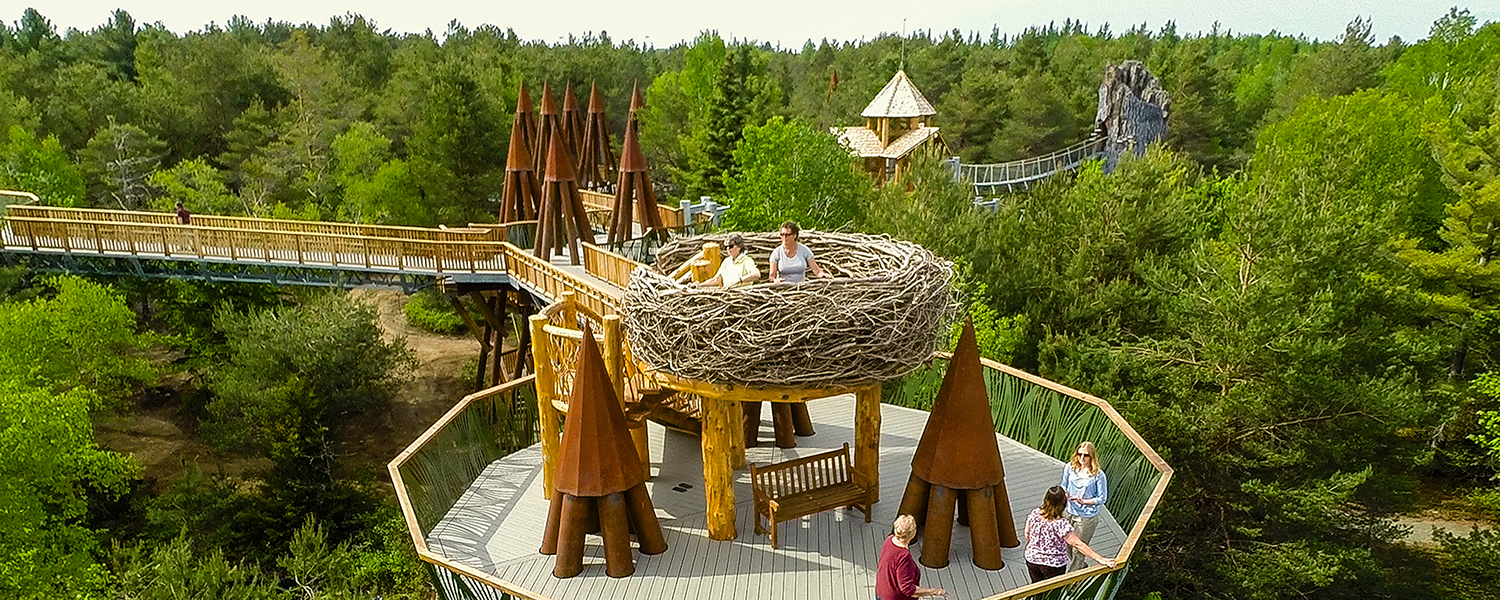
[bctt tweet=”“The Wild Walk changed the demographics of our visitation” – Hillarie Logan-Dechene #WhyCollaborate #podcast”]
We also have riverfront, and that’s allowing us to really promote our canoe trips and our stand-up paddle-boarding. People are coming on sunny days, so they do Wild Walk, and they can get outside and do all these other things. It really has transformed our whole experience at the Wild Center.
Of course, the Wild Center itself, the main museum experience is really very special as well. We have great exhibits where you can come face-to-face with an otter and have these animal encounters. Our naturalist staff will teach you all about the animals and the plants of the region. So it’s a special place.
It is a special place, and that Wild Walk is just breathtaking. I remember my family and I did it, and getting up there to that eagle’s nest and looking out across these treetops because when you’re in the Adirondacks, and you’re in these forests, you’re always looking up and these trees are so tall. Now all of a sudden, you’re at the top of them, and you’re right. It really does change your perception.
I think that’s just a really great way to think about your attraction and to expand your offerings in such a way that it balances out those indoor and outdoor experiences. What a great impact that’s had on your visitation as well. I think that’s just awesome.
I have to say because it’s been so popular, and because it’s gotten so much exposure in the press, and it really has been picked up so broadly. It has changed the demographics of our visitation, which has had this unbelievable impact and also has really helped us with the collaboration and made us really desire to do more of the international marketing and reach out.
The Adirondacks has pretty much attracted a pretty stagnant demographic for a long time. It’s been from very similar markets. I’ve been doing tourism in the Adirondacks, as I said, for a long time. Our primary markets have always been Albany capital region, Syracuse/Rochester, those have been the two major draws followed by New York metro area.
Also, I have to say, the demographics of the visitors have always been about 40+ years old, Caucasian, mostly adults with children in the summertime and then adults without children in the offseason. Since Wild Walk’s opened at the Wild Center, that has changed. We are getting people from all over the state, every quadrant of New York State and beyond, not just those particular corridors. We’re seeing people from every ethnic group in terms of ethnic demographics.
They’re coming from Brooklyn, places that we didn’t reach prior. They’re coming from the southern tier, other reaches of the state that we hadn’t really reached into before. Other parts of the northeast that we hadn’t penetrated before. It has changed, and it has changed in a wonderful way.
That’s really neat how this new product offering has really been a catalyst for a lot of what is happening right now in your region. This change in demographics, but then that’s opened up like you mentioned, the international opportunities as well. I guess I hadn’t thought about it that way before, but what a neat sea change that happened just from adding this new attraction.
It’s been interesting. I think a lot of things happening at once have converged to make that happen. I think also with us marketing to the Chinese populations, doing our Chinese marketing, recognizing that we know there are over 900,000 Asian Americans in the New York metro area.
We’re seeing our marketing to the Chinese market have double impacts where we’re going to some international trade shows down in the Flushing area, Flushing/Queens area. I think that’s having two impacts on us. I think we’re getting Chinese Americans coming to our region and also helping us to market to the international Chinese market. So it’s just helping us all around.
Yeah, and I think that’s a great point to mention as well because when you think about international markets, and of course the Go North project and that conversation that we had a few minutes ago was mainly targeted on bringing overseas visitors, right? That are already coming mainly into New York City and getting them up into your region. But in addition to that, there are these 900,000 Chinese Americans in the metro New York City area that have family also. Right? Overseas.
Right. Right.
So not only inspiring them and getting them to travel, but then when their friends and family come to visit, you have that back to that referral, right where we started actually this whole conversation.
That’s ripple effects.
Yeah.
Yeah.
Yeah exactly. That’s awesome. Well, I love it.
How to Market to Millennials
Like I said, when we talk about creativity, most of my interviews, I can’t think of anywhere we’ve talked about creativity without talking about collaboration. I do want to ask a few specific questions around collaboration.
This whole idea, and you and I have been talking about it right along here. But when I think about collaboration, especially in the tourism industry, I like to call it “coopetition” because it’s where these perceived competitors actually come together and cooperate and create something bigger together than they could on their own. And you have so many examples of it.
One of the projects that we haven’t talked about yet, which I’m hoping we could talk about now, is another collaborative project that you did. It was the millennial study. Can you talk to us a little bit about that and how that came about and what you’re doing with that market?
Certainly. Yeah, that was a great project. We did that in 2015, started it in 2015. What we noticed at the Wild Center, we’d all heard the millennial buzz. It’s the largest upcoming generation and the general demographics of that group. We noticed that we weren’t getting many millennials, and knowing that we needed to focus on that group a bit more.
Also being concerned that the demographic we were getting was aging, and if we didn’t do something, we might not be relevant to the next large group. So we were fortunate that we were able to do a study and hire a firm, Schireson Associates, which is out of New York and California. They are a group that very much focuses on millennials. They work for MTV, Viacom, IBM, and some major, major corporations. Their specialty is millennials.
They were able to work with us to design a study to drill down and figure out what is the Adirondack gene, and how to identify it in people and what those people really want. I’m getting a little ahead of myself in the Adirondacks. Let me describe the process a little bit more.
In the Adirondacks, once we thought about what we were trying to get at, we realized again, and I sound like a little bit of a broken record on this. The Wild Center couldn’t really do this alone. No one is gonna just come to the Adirondacks just to see the Wild Center. Some people are. In fact, we did find that some people just come to the Adirondacks to see the Wild Center. That’s great. That’s wonderful.
But really it’s a rare person. They still need to find places to eat, sleep, drink and do all the other things. We realized we needed to get some other people involved in this project. Once we had a preliminary conversation with Schireson, they concurred.
So we recruited, even before we got together with Schireson, I recruited some colleagues from other attractions, asked them what they thought of the concept of doing a millennial study of identifying how to attract more millennials to the Adirondacks. We had some informal conversations with people from other major institutions.
A couple of them signed on with us and said, “Yeah, we’ll help out.” They just had to help out with the project, be part of it, be advisors and help us work with Schireson and make sure we got the study tool correct and got what we needed out of the study.
We asked the other big attractions to participate with us from the whole region including some attractions that were technically outside of the CFA Adirondack region, but still a part of the region. For example, View, an Old Forge is technically out of the Adirondack region, but Old Forge is still part of the Adirondacks. They helped us with this.
So we did conversations, focus groups, and interviews. They did phone interviews, and we basically came up with a whole process with the concept that the hypothesis is that dormant in some people, there is an Adirondack gene. That some people get what we have to offer, and no matter where they are, they would love it if they got here and found out what we have to offer.
Other people, not their thing. They are more interested in what cities have to offer or more urban or suburban places, and they would never really like the Adirondacks anyway. And if we could just identify the traits in people that really love the Adirondacks and could market more specifically to those people, find the kind of key marketing buzz words, if you will. That’s too limited of a term, but if we could find what would appeal to those people, we could better market this region. Okay? So that’s the basic terms of what we tried to do.
We did the study, and we got some fabulous, fabulous information from this study. We presented it all over the region. I think we did five presentations. Schireson came up and presented their findings, and we had great turnout at all of these sessions.
Then the people who were at the sessions said okay that’s great information. This is a unique market, and you’re telling us we need to market to them in specific ways. Social media’s really important. We don’t know how to use social media. How do we market to them?
We realized we had to do a second phase of this study. So as the second phase of the study, we then engaged a marketing company, Trampoline out of Glens Falls to help us create a toolkit where we did a whole series of mock advertising, promotion, marketing campaigns using a bunch of different marketing methodologies with social media. We would have a Facebook campaign, Snapchat, just a whole series of different ways of communicating to millennials and communicating the messages that would be the best messages per the study, per the recommendations of the study.
The study came out with even a very specific tagline of what would be very appealing to this demographic. The areas that we studied were the New York metro area in the Hudson Valley corridor, and the Albany region. We were very much targeting a specific area for reaching out in this study.
Then we created this toolkit, which is both digital, and we did a print run. We had to print it twice because we then presented it, and it was so popular we ended up presenting this toolkit. It turned out to have much more reach than we initially thought because it turned out to be a valuable kind of how-to guide to market to millennials.
And we were specifically talking about how to market the Adirondacks to millennials, but it had so many universal features about how to market to millennials that people were really interested in the information. It was a very practical guide on some of the basics of marketing to millennials, but also the basics of just I think today, marketing.
It was an interesting project, and the feedback we got from all of the tourism trade in the region, who are basically our partners in this project, helped it become a useful collaborative tool for the whole region. The idea that The Wild Center needed to have more millennials turned into a study that turned into a tool that turned into an initiative that was region-wide.
Yeah, I think that’s just really cool how something starts like the seed of an idea starts, and then how it just kind of builds and gets broader and broader. There’s actually a couple of things I want to go back to because there’s so much good information here that you just shared.
One of the things I wanted to start with is on your hypothesis where you talked about the whole idea of the Adirondack gene being dormant in some people, not everyone. But when I heard one of the presentations on this project, what I thought was most interesting that I hope you can share with our listeners, is this idea of what the Adirondacks thought they were and what resonated with people versus what really resonates. That’s this whole idea of are we hardcore adventure people? Or is there something else there? Can you talk a little bit about that?
Yeah.
Yeah.
Yeah. Actually, you picked the point that was most salient to me as well. What the study found, one of the things that the study found and one that just was so poignant to me was that for the millennials that were studied, one of the items that was pointed out is that the Adirondacks has been traditionally marketed as a rustic, rugged, outdoor region where you kind of envision everybody gearing up in their high-tech gear to go climb a mountain, spend five days in the rugged outdoors, and trekking along and doing all this extreme rock climbing followed up by backcountry skiing. You get the picture.
Yeah.
Then what we found was that the millennials that were studied are turned off by that in essence. That that is too much. That they conceptually are interested in getting outside, but for a short jaunt. They don’t mind going for a little walk. Maybe go see a waterfall, take a little photo opportunity. They want to kind of maybe sit on the dock and have a beer, have a campfire, find out about the local food. They love the concept of the small communities. They love everything the Adirondacks has to offer that we’re not marketing.
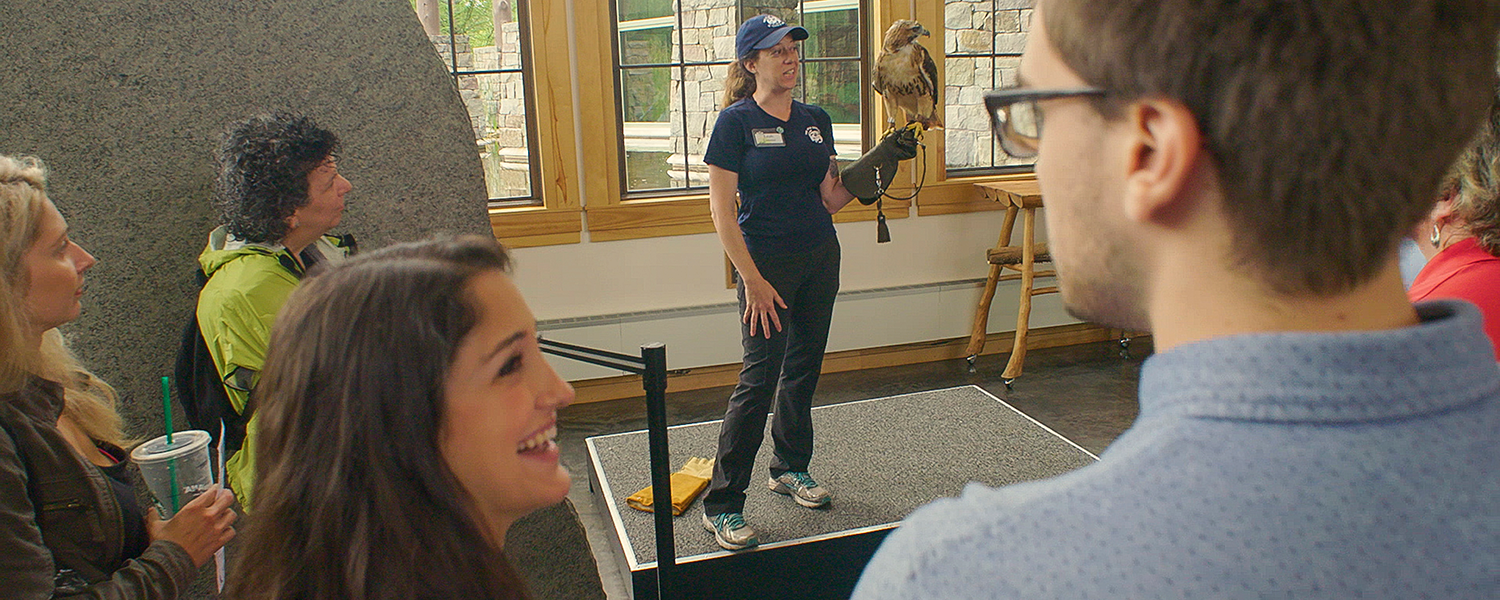
[bctt tweet=”“Millennials don’t want a rugged, rough experience. They want to go for walks, take photos, and eat local food.” – Hillarie Logan-Dechene #WhyCollaborate #podcast”]
They love the concept that we have small museums, and they love the history, the communities. They like the idea that there’s all that sports and outdoor stuff available, but they’re not really … That’s not the primary thing that’s gonna pull them there. If you tell them they have to do all of that, that’s kind of a turn-off. They don’t have enough time to do that kind of activity, and they want to go to restaurants.
So it would be a conflict in terms of their planning, if they had to think about trying to do a backcountry trek for three days, if they only have three days off, and they also want to go to restaurants and do a farmer’s market and try their hand at beekeeping.
There was that crisis setup from marketing the Adirondacks as this rustic, outdoorsy, backcountry experience. What we found, kind of in a nutshell, was that we were making the Adirondacks as this wilderness, isolated, backcountry experience. We were underselling all of the other assets we have, which are these great small towns, restaurants, local food, micro-brew, sit by the lake, chill out, experiences, which were plentiful in the Adirondacks. People didn’t know about that.
What we had to do is pivot on our marketing and just show some things we did have, and we could attract a whole nother segment of people that would be very happy to come and willing to come.
Yeah, I think that’s really enlightening, and what’s also so cool about this study is that you were able to find that gold and so many other things, but then you took it a step further and turned it into this toolkit that your partners in those small chambers and even the region as a whole could use as a model for marketing to this new demographic.
Right, right.
I think that’s really awesome. We’ll link to the study, and I think the toolkit‘s online. Right?
Yep, both are.
Yeah, so we’ll link in the show notes to both the study and the toolkit, so that listeners can go and find that and see that for themselves because it is really great. And you made the point earlier that there are some universal features for marketing to millennials, not just … Even though it’s Adirondack focused, but there’s a lot of really good information that can be used just in general for marketing to millennials. We’ll make sure we get those links in there.
Collaborations Aren’t Marriages
Hillarie, we’ve been having a great conversation so far, and I’m cognizant of your time and my time. I have just one more question for you before we wrap up, and I do really appreciate you spending this time.
One of the things that I like to ask our guests about is just some general advice on finding the right partners and setting up a collaboration or a partnership for success. Do you have some thoughts on how you set the groundwork for a successful partnership that you can share?
Sure. And I would just quote our executive director, Stephanie Radcliffe on one of the best piece of advice. “When we do collaborations, we’re not looking for a marriage, we’re just dating.”
So you know, she said that, and it’s really a great way of thinking about these things because it takes away a lot of the trepidation that some organizations have. We don’t need to divorce if you’re not married. It’s just a partnership. It’s just dating, and if it doesn’t work out, you can just separate.
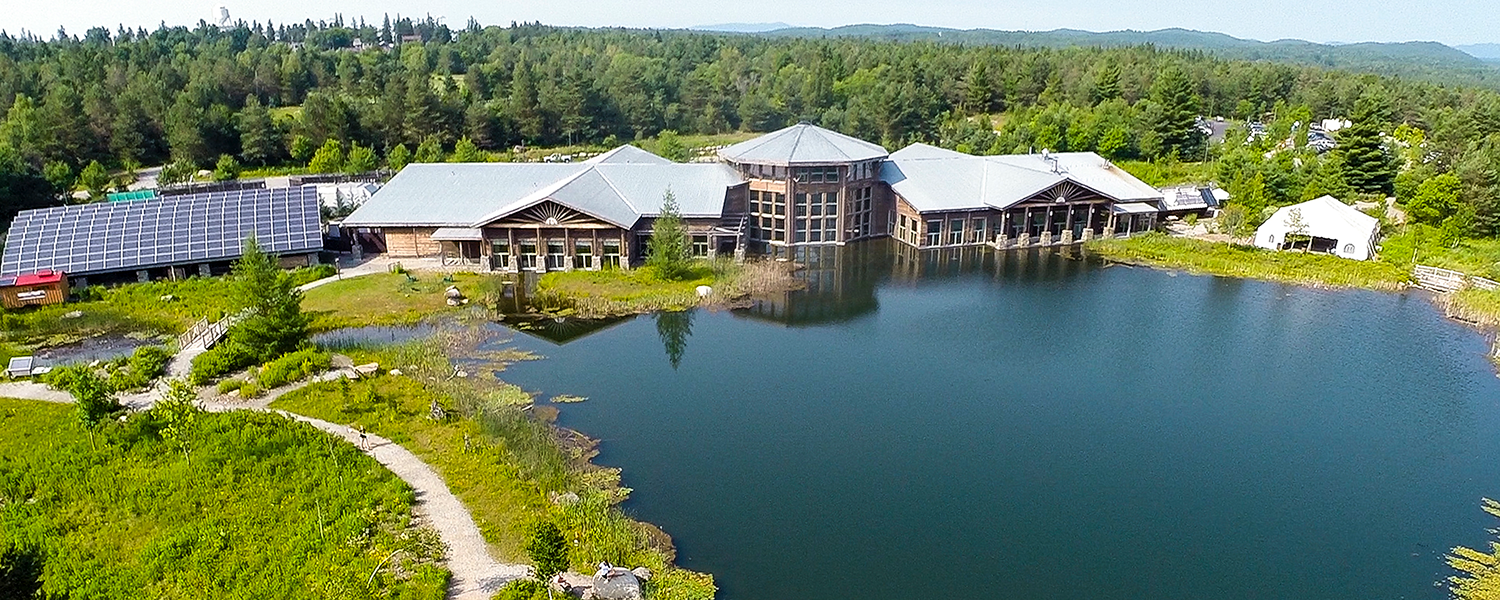
[bctt tweet=”“Collaborations are just partnerships. It’s just dating, and if it doesn’t work out, you can just separate.” – Hillarie Logan-Dechene #WhyCollaborate #podcast”]
You can just approach things in a way that’s not so mired in legally using all of these things and let people step away if they need to step away. Try to structure things to the extent that that’s humanly possible in a way that people don’t feel like they’re confined, and try to keep an open mind when you go into these things.
When people have turned us down on participation, it’s because I think they get too nervous about the what-ifs. Sometimes you need to take a leap of faith and be prepared to fail. We have certainly failed at things, but you know, when you look at what the failure potential is, it’s okay to fail. You gotta take some risks to succeed.
It’s fortunate when you have leadership that allows that. You need to be realistic about what the failure potential is, so if you’re pitching something, you could say, “If we fail, this is what’s gonna happen.” I think that’s important to be upfront about. I think that makes people more comfortable if they know what their risks are, and they’re usually not that terrible.
So yeah, you always can say, “Nobody is gonna die as the result of a bad outcome on this.” Tourism does not usually produce that kind of terrible outcome.
Right.
Try to be practical about that. For the most part, if you think through things, and you’re putting your heart into it, and you do things with good thought and good planning, and you execute things then I think you have a pretty good chance of success.
I think that’s great advice and really with what you’re executive director said. “We’re not looking for a marriage, just dating.” This whole idea of taking risks, and I think you used the word understanding the what-ifs, and I think that’s really great advice that thinking about, well what if we fail? This is what could happen. So at least you have that up front. That maybe can take a little bit of that trepidation, if you will, away from moving into a collaboration or moving a project forward. I think that’s really great advice.
Hillarie, this has been an awesome conversation. Is there anything that you would like to say as final words that we haven’t talked about yet, that we didn’t hit on before we say our goodbyes?
I just want to thank you, and thank you for bringing so much good information out to the field. You’re always bringing great topics. I think it’s great for us all to stay fresh, and just welcome any feedback from anyone. I appreciate the conversation. Thank you.
Well, I appreciate the conversation too, and I always learn so much from these, so likewise. I get so much out of it, and I’m glad that our listeners are as well. So thank you for being here Hillarie.
Thank you.
Ways to contact Hillarie:
- Website: www.wildcenter.org
- Study: www.wildcenter.org/forms/AdirondacksAndMillennials-Jan2016-WildCenter-sm.pdf
- Toolkit: gigabounce.com/WILDCTR
We value your thoughts and feedback and would love to hear from you. Leave us a review on your favorite streaming platform to let us know what you want to hear more of. Here is a quick tutorial on how to leave us a rating and review on iTunes!
